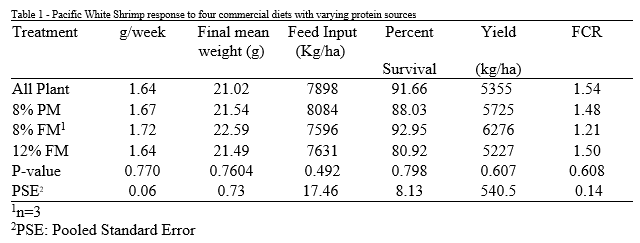PASSIVE ACOUSTIC FEEDERS AS A TOOL TO ASSESS FEED RESPONSE AND GROWTH IN SHRIMP POND PRODUCTION
Shrimp production has been one of the most important sectors of aquaculture for the last few decades for both its market value and acceptance . As production systems move towards increasing intensification, animal nutrition takes a central role as an important growth, environment and health factor. It is well reported that shrimp are opportunistic grazers that eat a wide variety of organisms, yet diets with low or no inclusion of fish meal are often s till regarded as of lower quality and a potential cause of less than ideal growth and production. As the majority of shrimp feeding protocols in typical production setups rely in a combination of feed trays and predetermined feed plans, direct assess of shrimp appetite and feed preferences can be complicated. However, for the last decade, development of passive acoustic monitoring has allowed a much more direct measurement of shrimp feed intake by capture and integration of clicking sounds produced by shrimp while eating. Tying this to a automated feeding systems has allowed the development of on demand feeding for shrimp. H ence, this technology is a potential tool to help understand feed preferences when the feeding protoco l is based on real time demand for feed rather than predetermined quantities. Building on previous research, the goal of this trial was to use passive feedback acoustic feeders as a tool to evaluate if shrimp prefer commercial diets with different protein sources when given the option to eat as much as requested. This 13-wk trial was performed in 16, 0.1 ha outdoors ponds, stocked at 30 shrimp/m2 and equipped with the AQ1 acoustic feeding system. All ponds were fed the same predetermined protocol during the first month after which acoustic systems were initiated and four treatments were assigned with a 35% crude protein commercial diet with different protein sources: all-plant, 8% poultry meal (PM), 8% fish meal (FM) and 12% FM. Results for this trial are summarized in Table 1. We did not find any differences in statistical differences in any of the main production parameters. Results of this study indicate that shrimp d id not clearly favor a particular diet. Hence suggesting that when well balanced commercial feeds and feed quantity are not a limiting factor , shrimp growth was not highly impacted.
